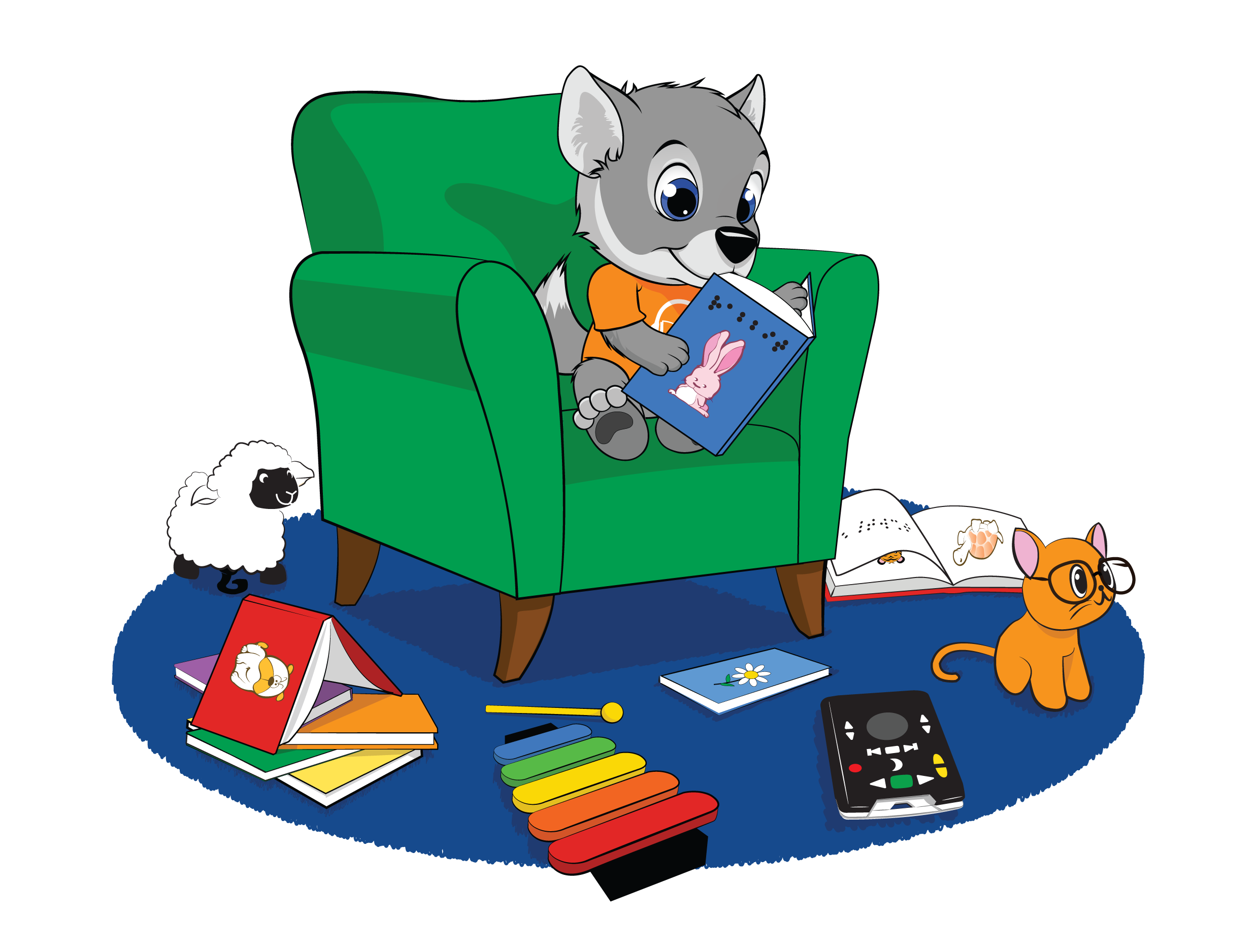That All Children May Read Early Literacy Program

About the Playing with Books Skill
Playing with books allows children to learn many things about a book. First, it teaches them the parts of the book. They learn about the front, inside, and back of a book. Second, it teaches them about the orientation of the book. While interacting with a book, children begin to understand when the book is right side up, upside down, or backwards. This skill is important to establish because it builds the foundation for a child’s enjoyment of books and prepares them to learn to read a book.
Playing with Books Recommended Readings
Playing with Books Activities
Babies (Birth through One)
- Read books that have high contrast pictures and text, only a few words per page and only one or two images per page. The high contrast allows babies with some sight to better see the images. Books with a lot of pictures and words on one page can be overwhelming for your baby.
- Babies love to put things in their mouths. This is one way they learn about different objects. Though we do not recommend this with library books, it is okay for your baby to nibble a bit on a board book that you own. Make sure the board book has no sharp edges.
- Books that have flaps, make noises, or contain tactile elements are great for encouraging your baby to love books. When sharing these books, make sure your baby is well-rested so that they associate reading with a positive feeling.
Toddlers (Two through Three)
- Let your toddler select the book you will be reading together. Choosing a book as well as having that positive interaction can instill a love of books.
- During playtime make sure some of your toddler’s favorite books are available. Sometimes books can be just as fun to play with as toys.
- Even if your toddler is unable to sit through a story, read aloud while they run around. Your toddler is taking in all kinds of information including the story you are reading, even if it does not appear that they are paying attention. You could also pick shorter stories to read to your toddler if they are not ready for a longer story.
Preschoolers (Four through Six)
- Make sure your preschooler is aware when you or another family member reads. Allow your preschooler to sit with you while you read. Knowing other family members read is encouraging for a preschooler. Realizing that there are different ways to read can develop an interest in reading.
- Playing with shapes allows your preschooler to gain the concept of right-side-up and upside-down. This concept can then be applied to books. Eventually your preschooler will be able to tell when a book is upside-down or backwards.
- Reading nonfiction books can help your preschooler better connect with the world around them. Reading a book about trees and then going outside and feeling the different trees and plants will give your preschooler a greater appreciation of information in books.